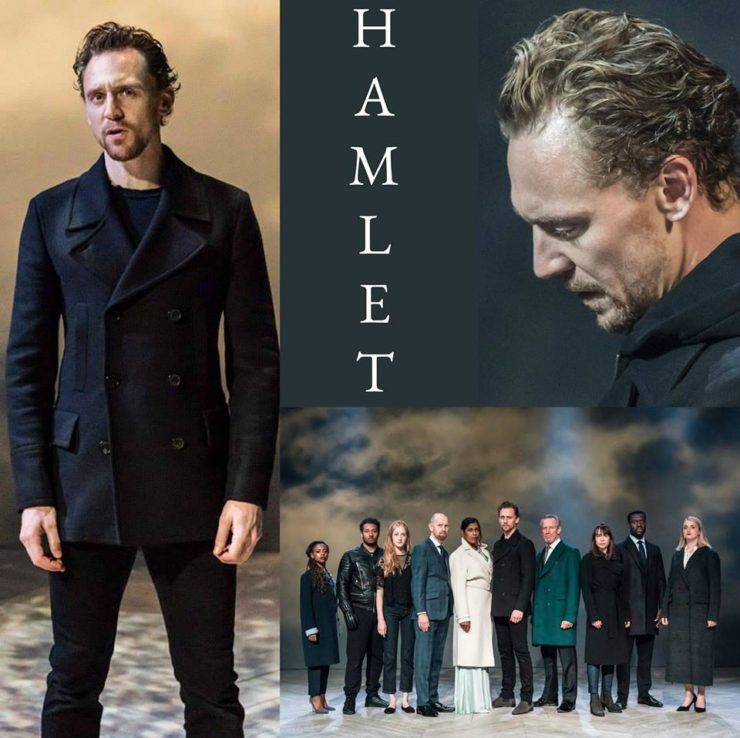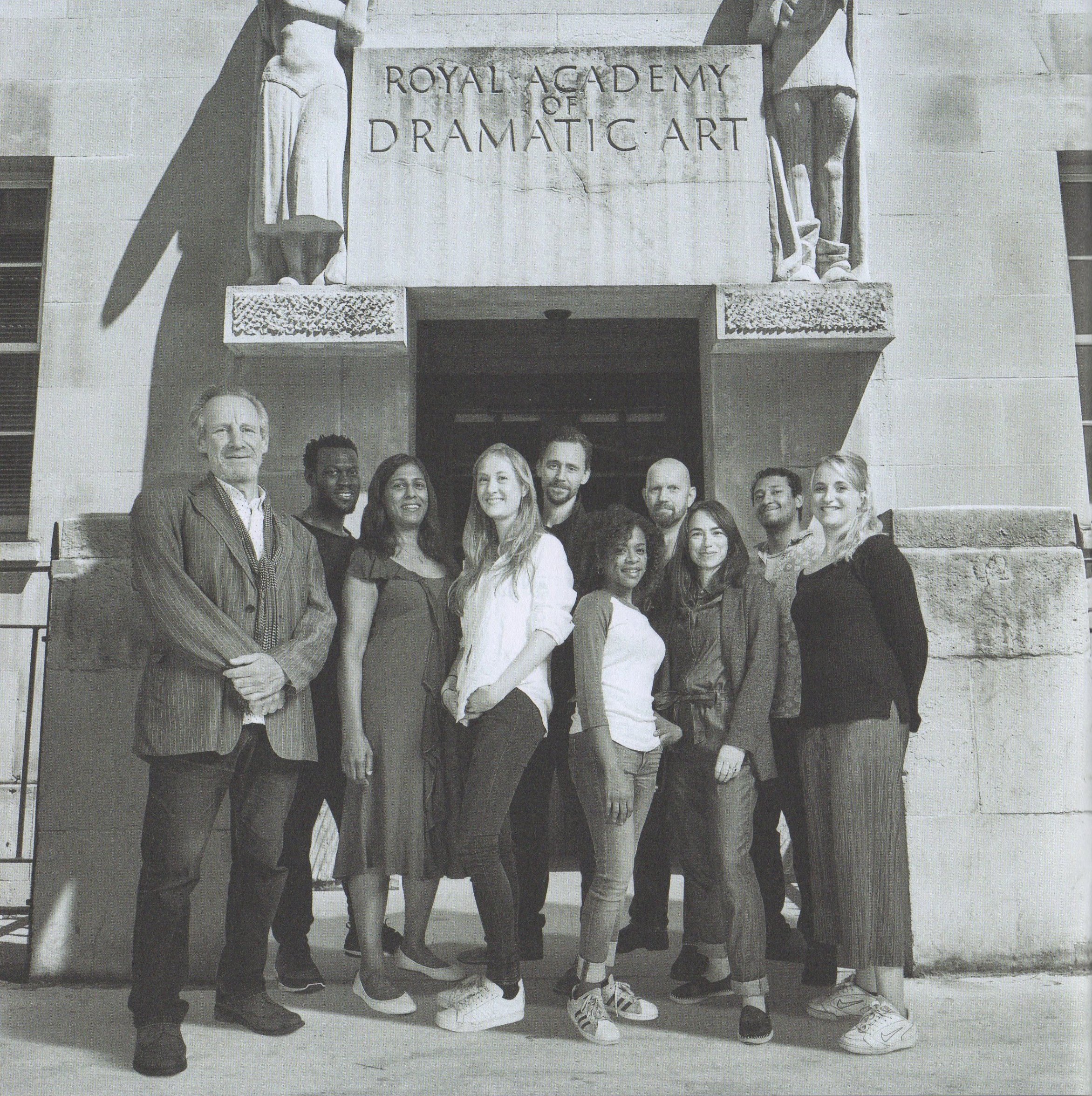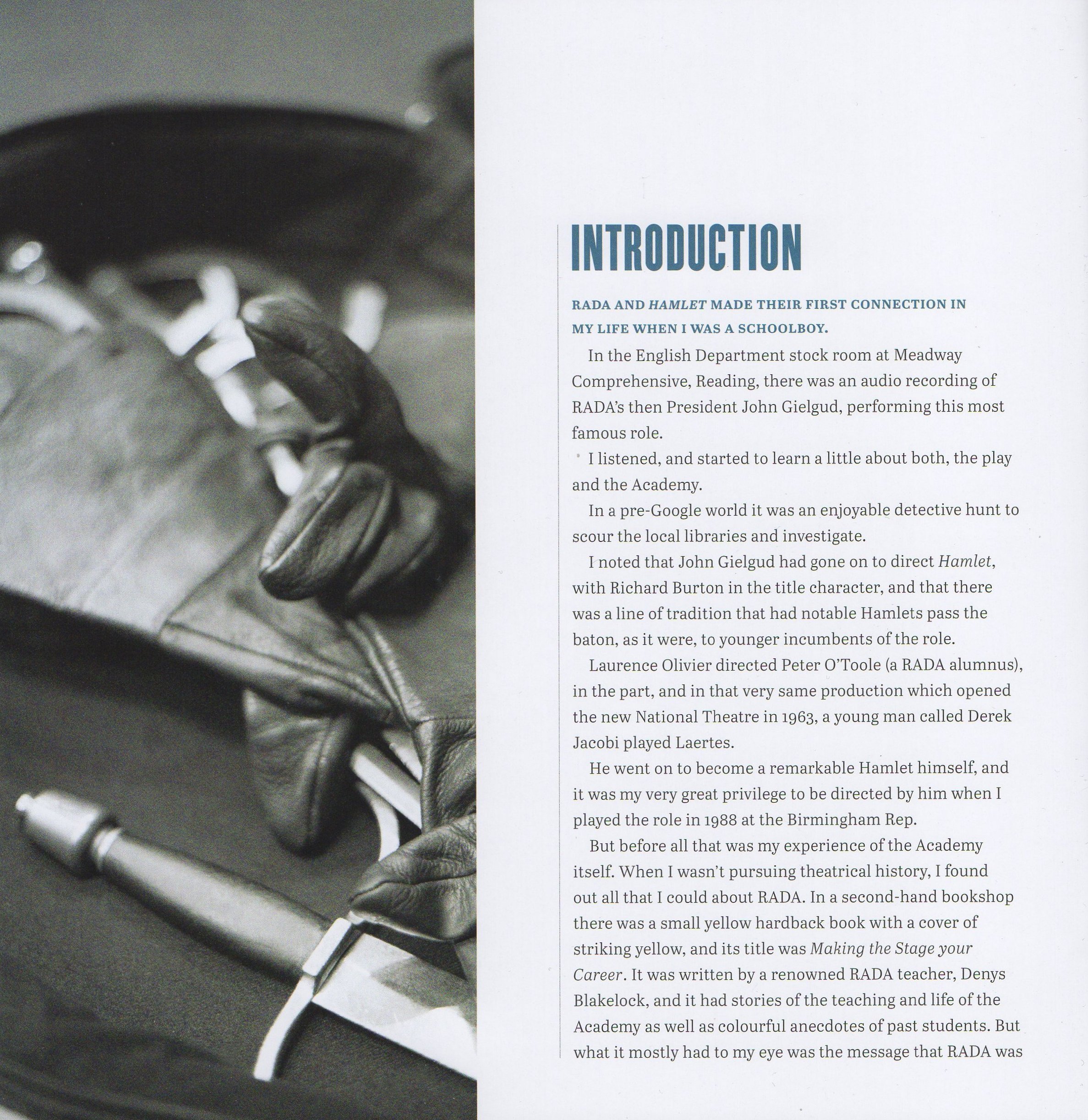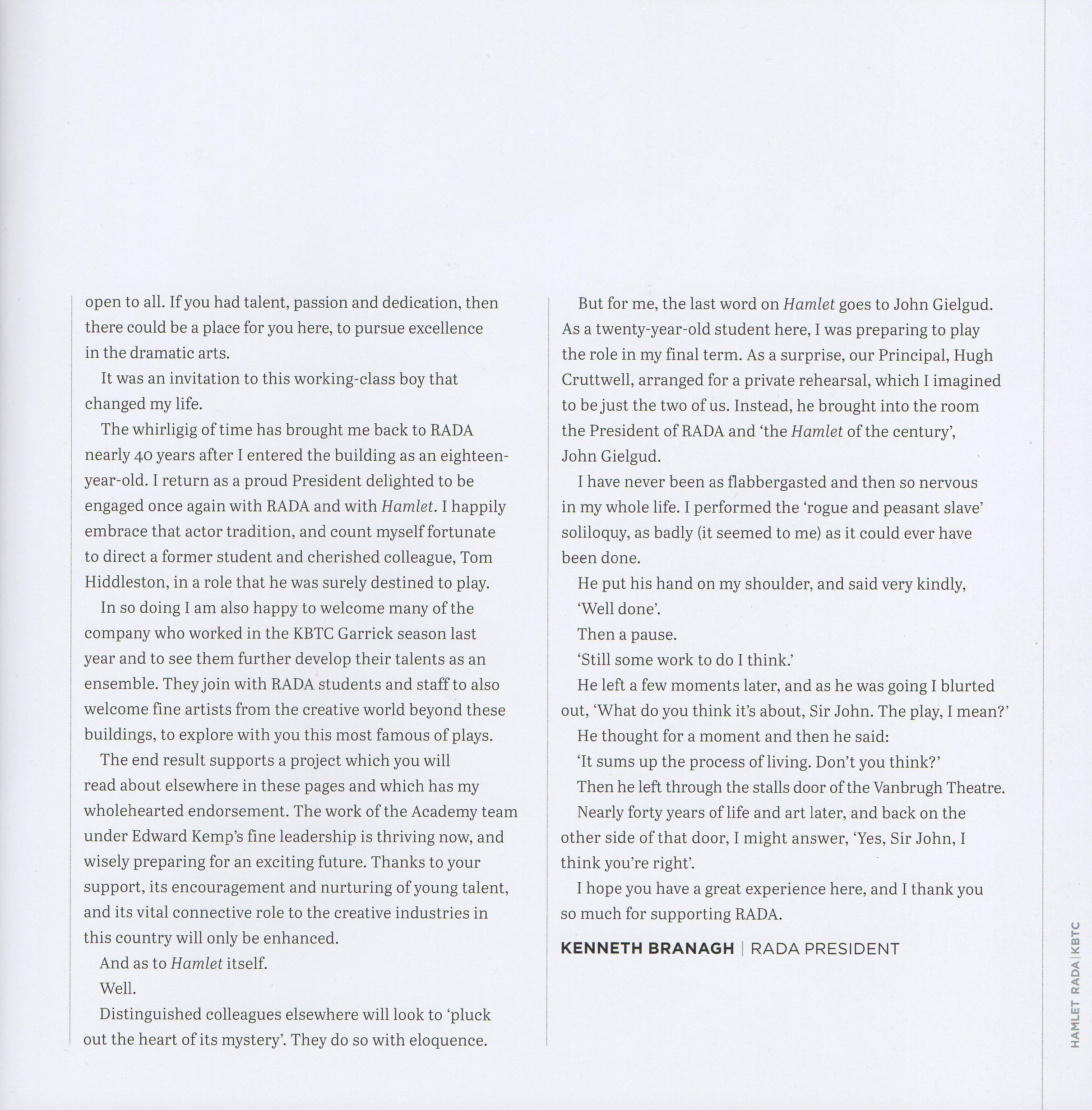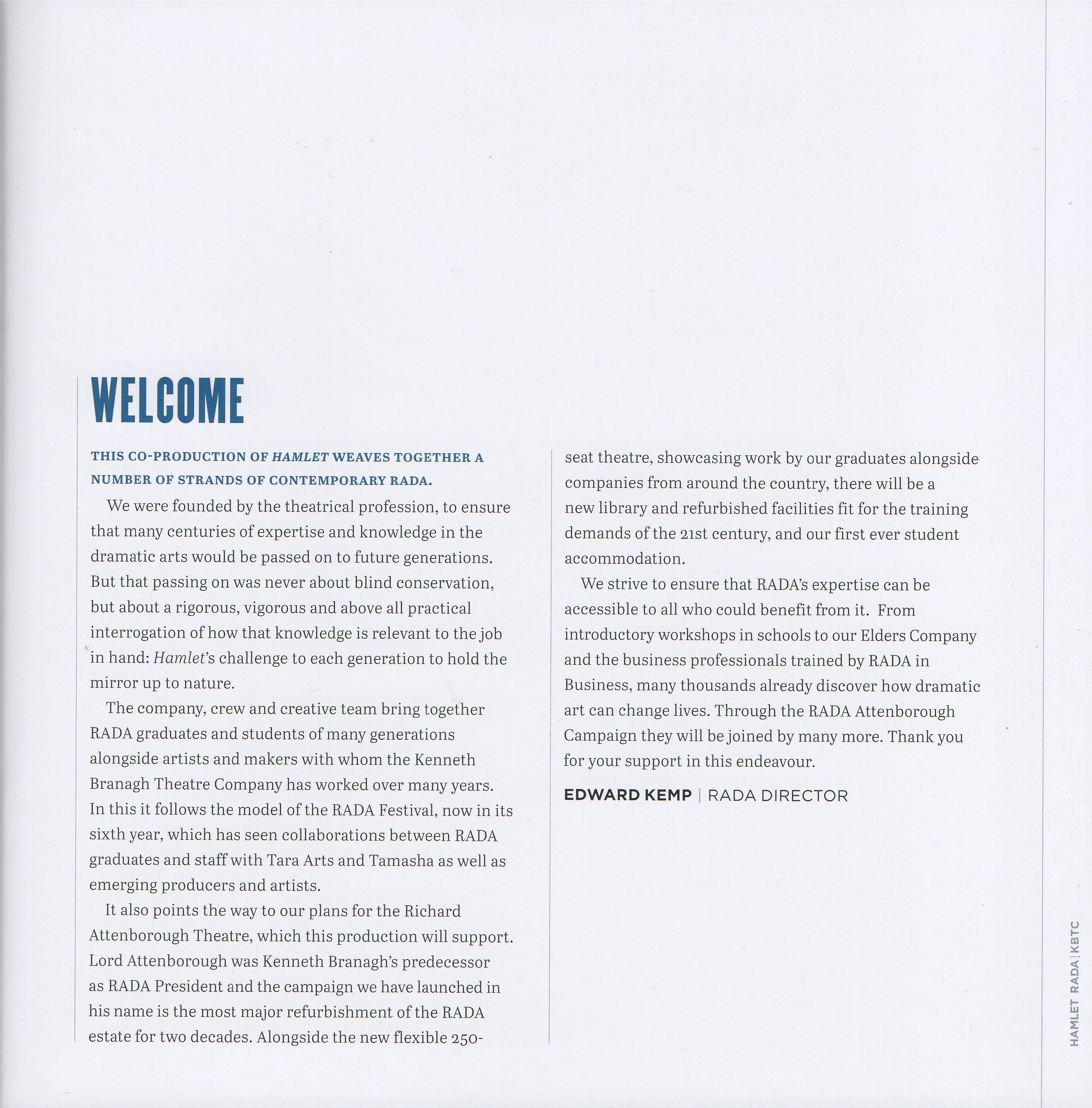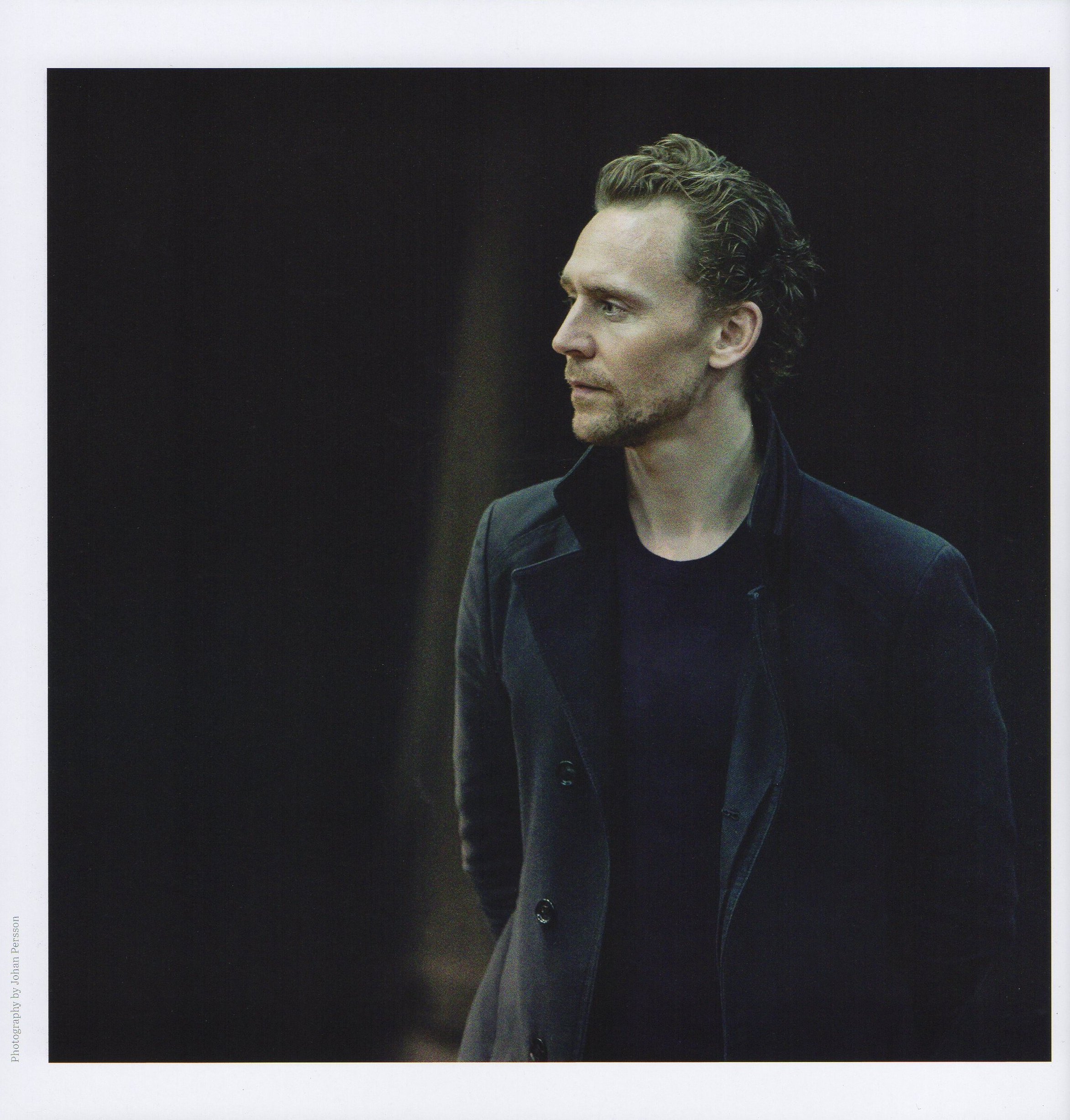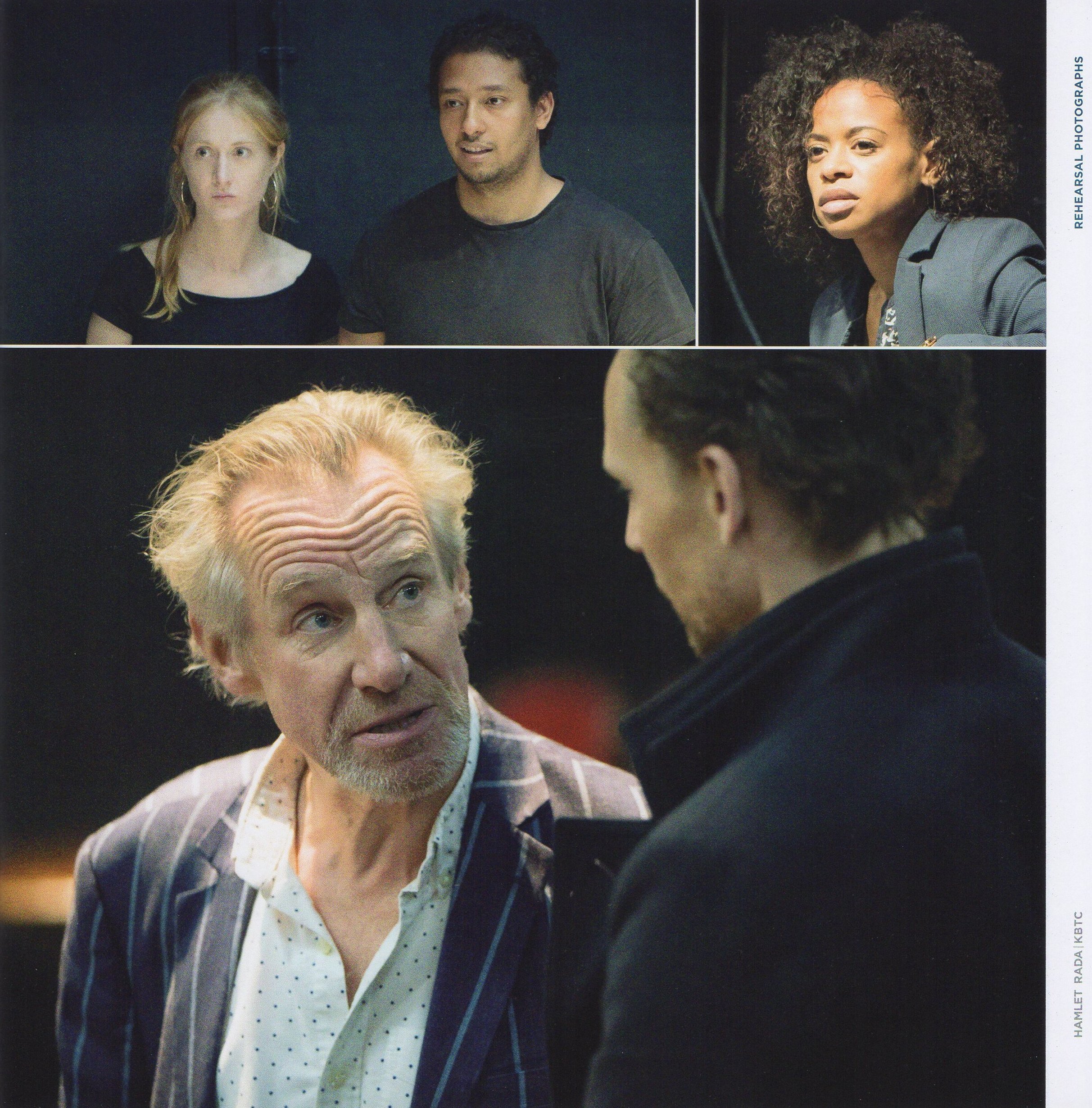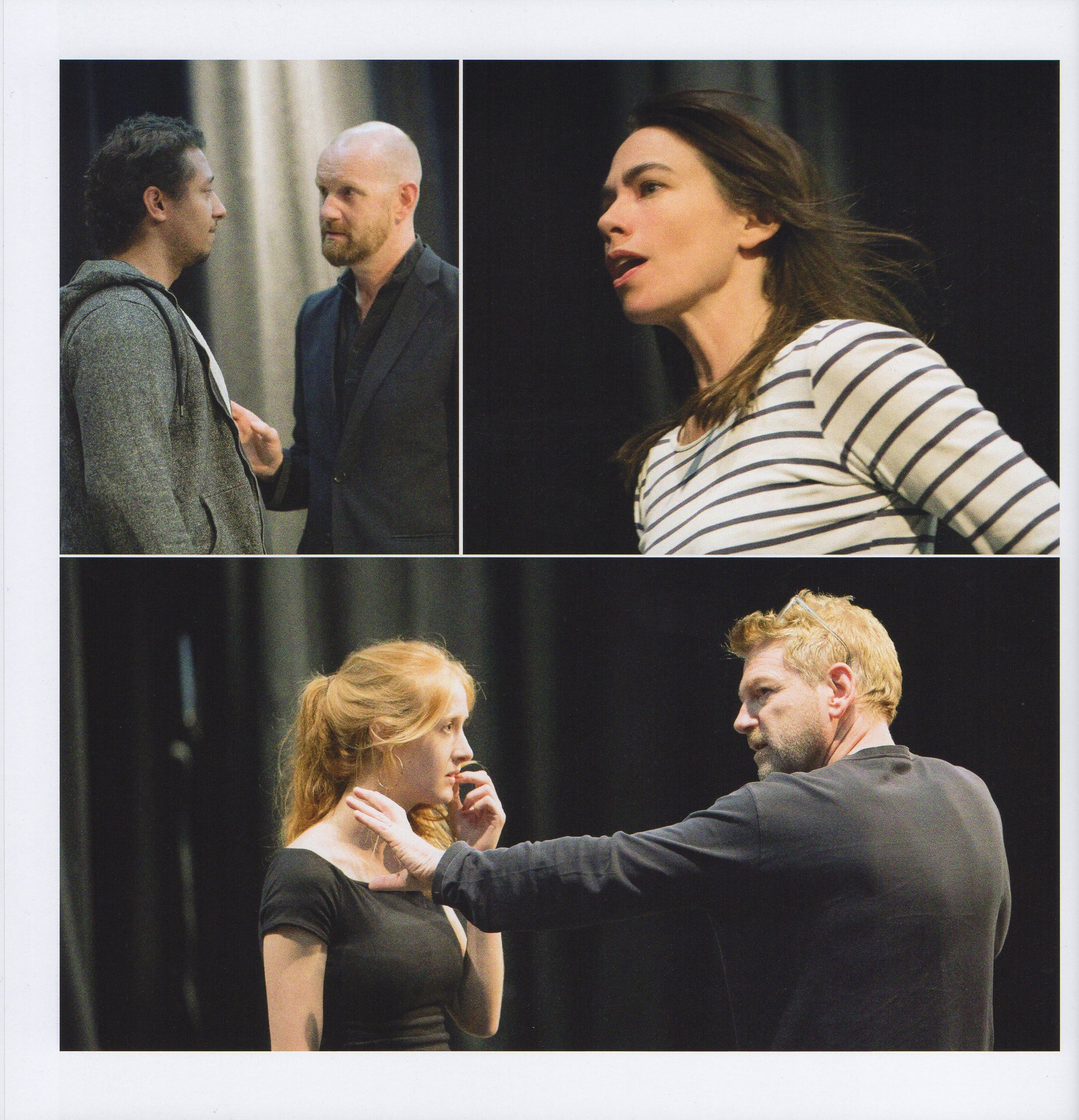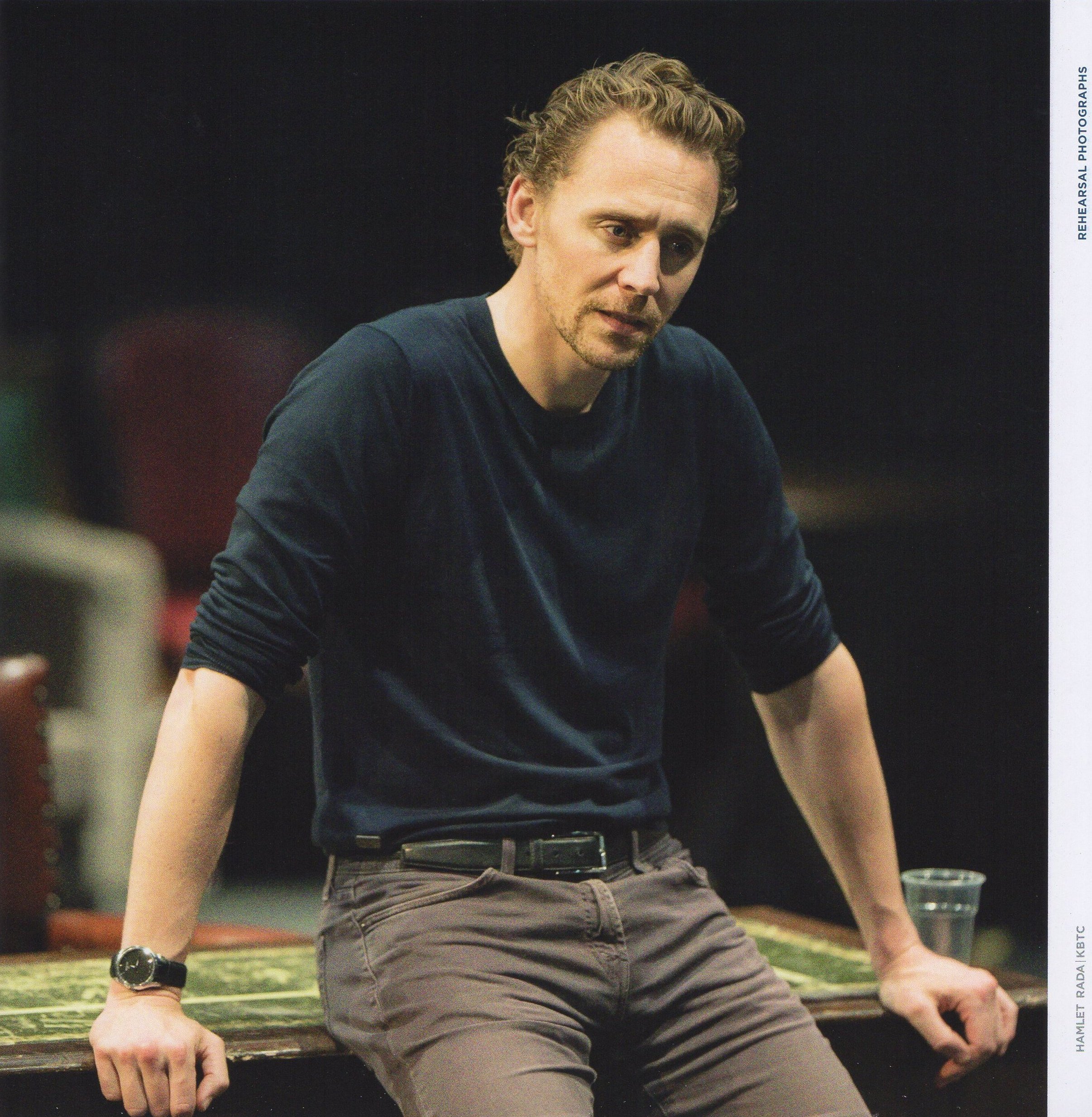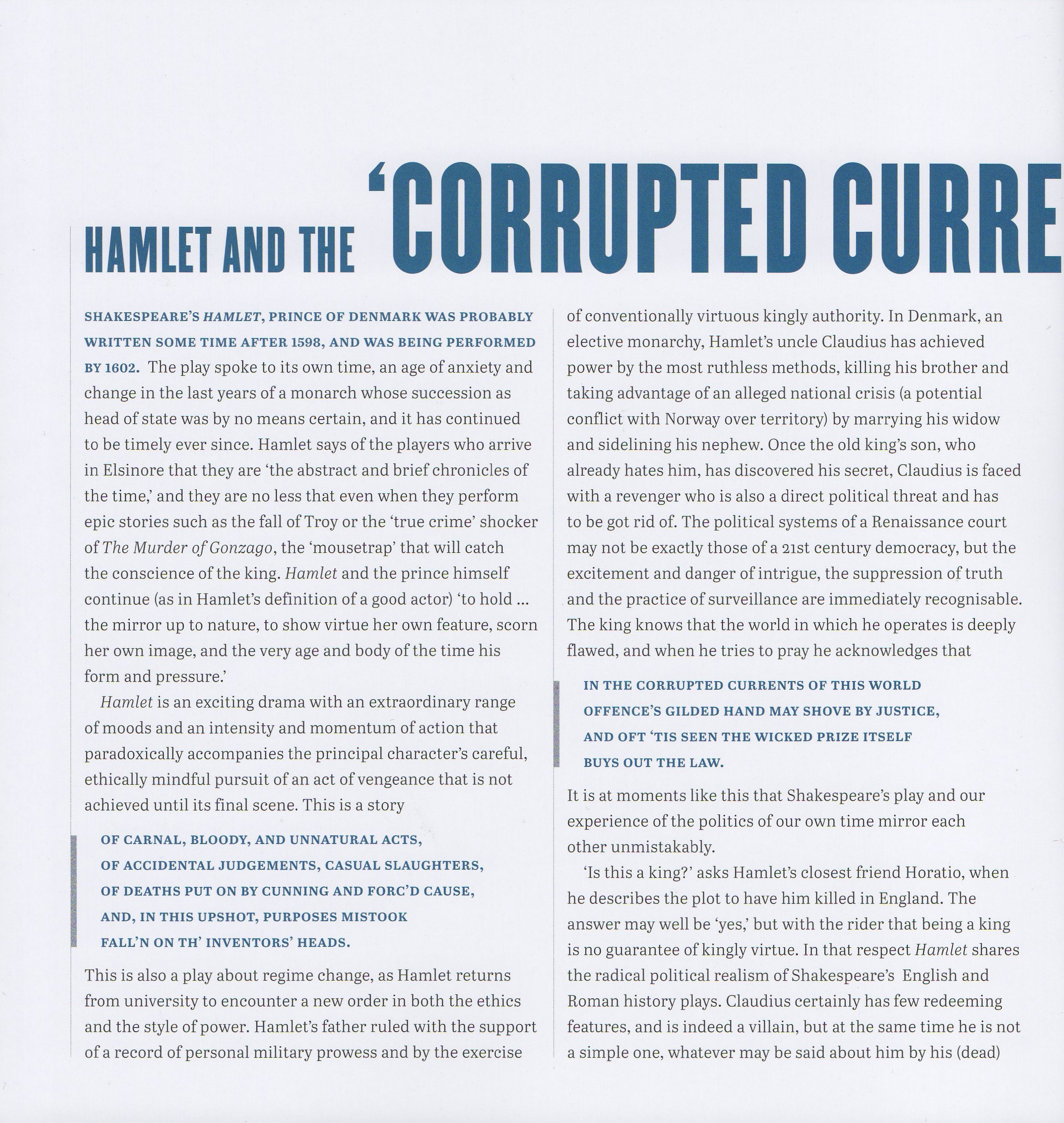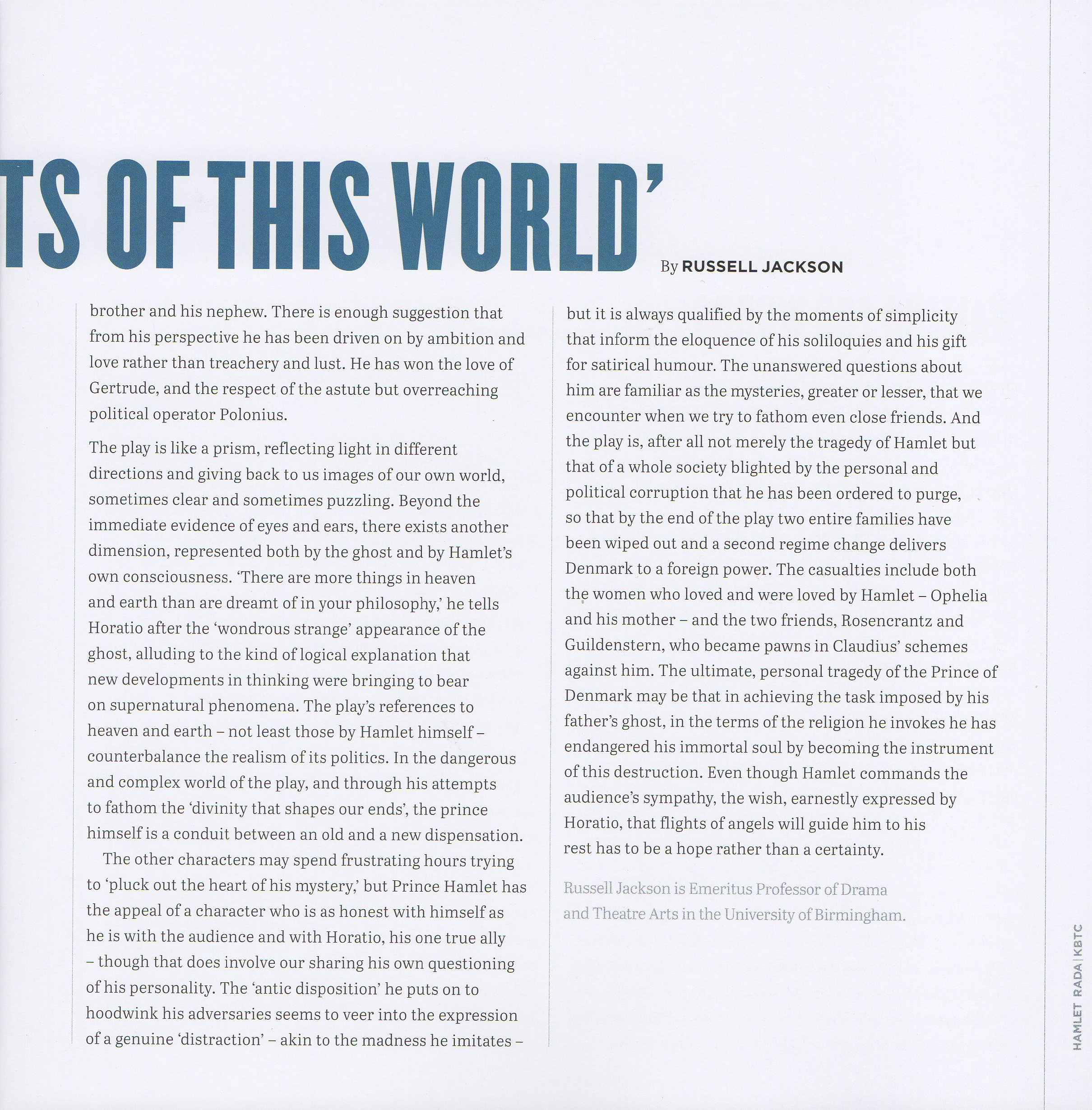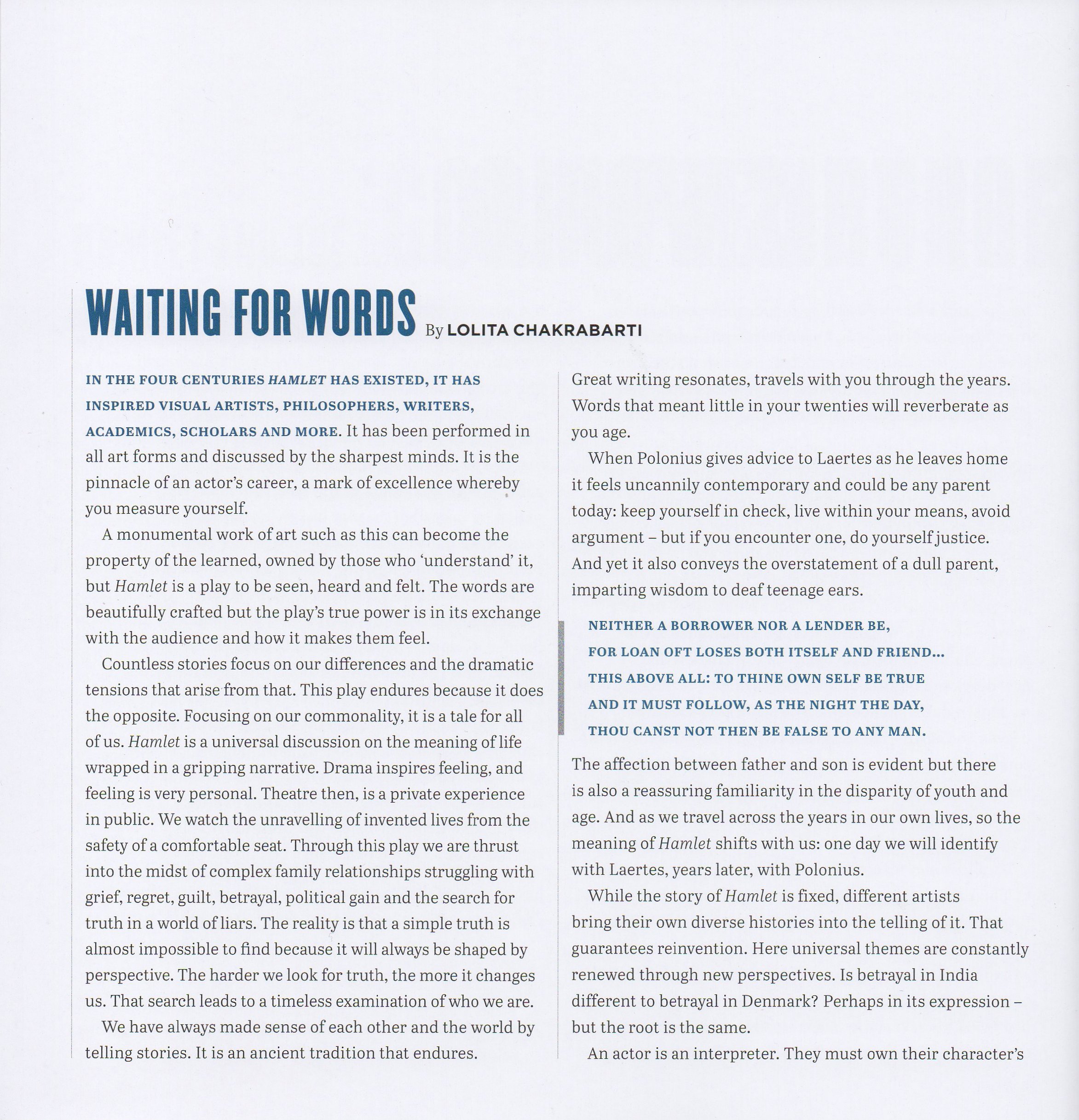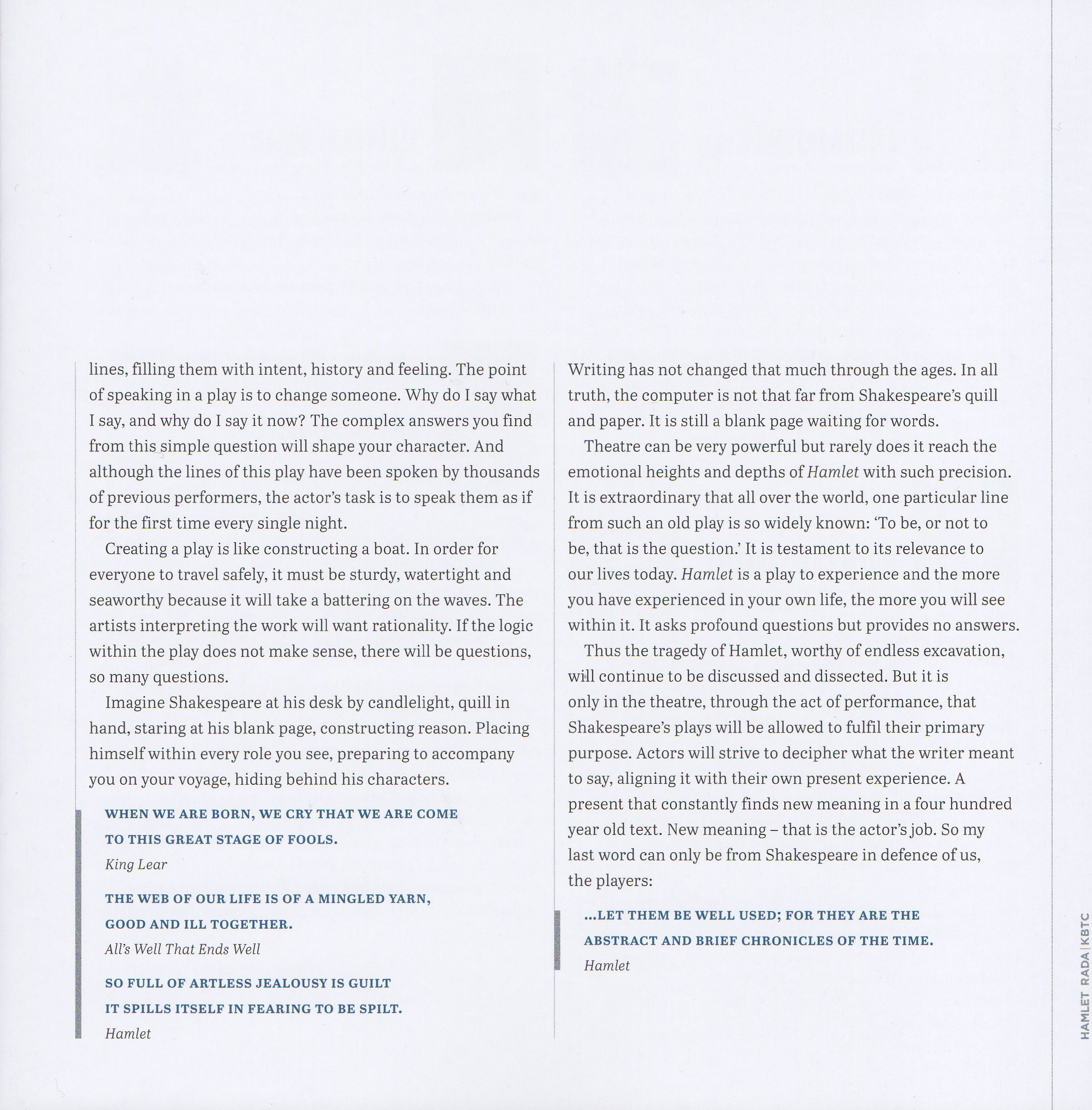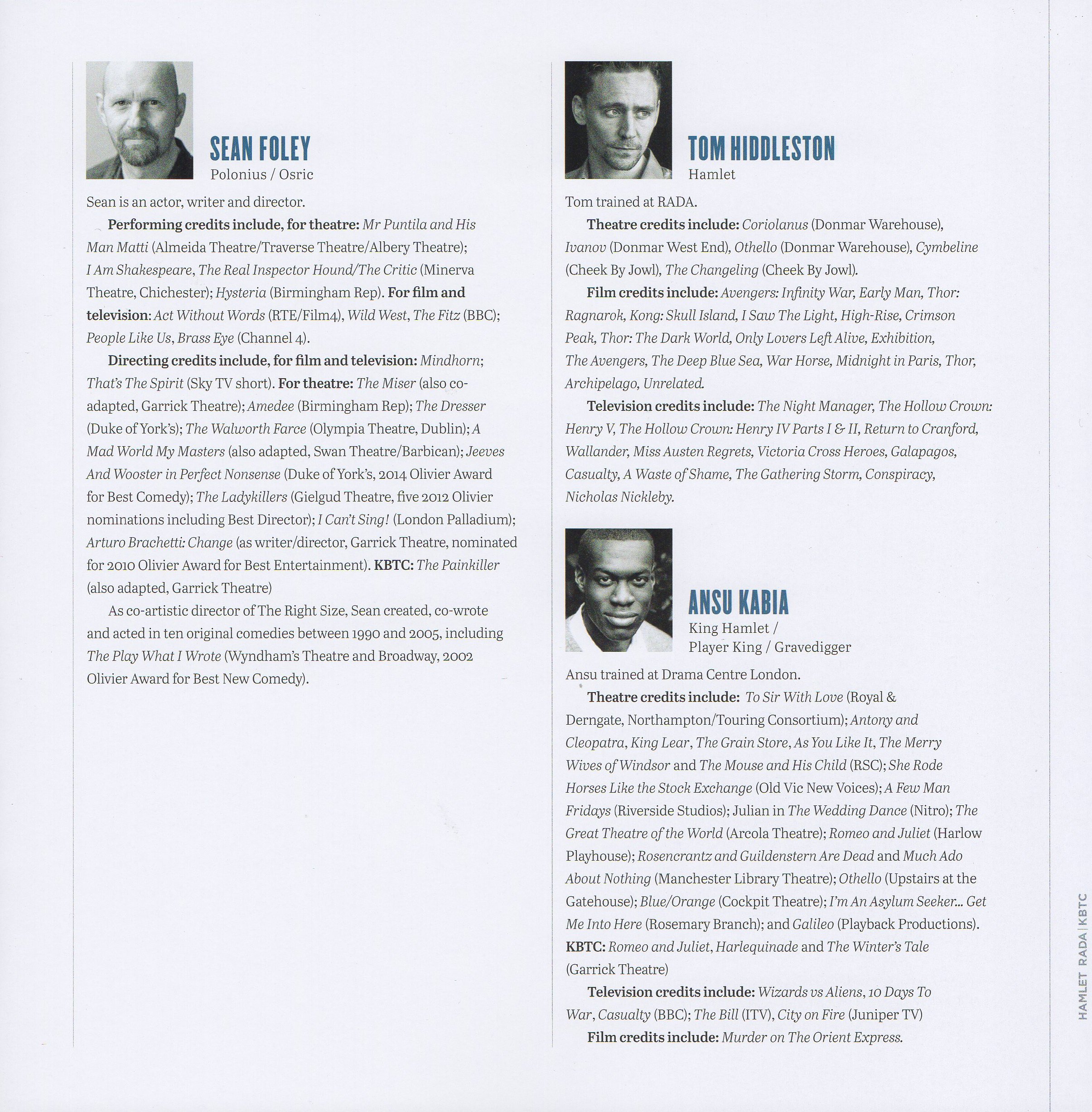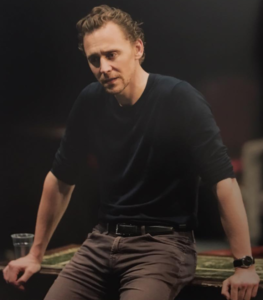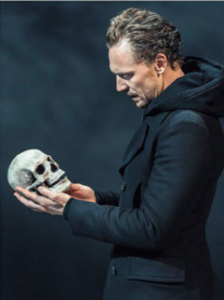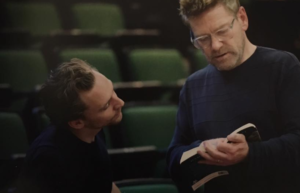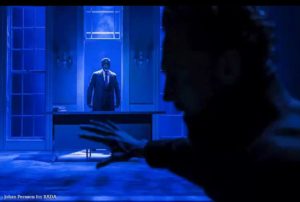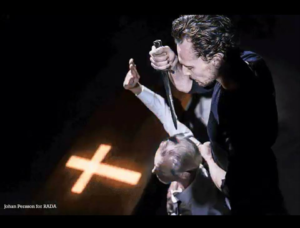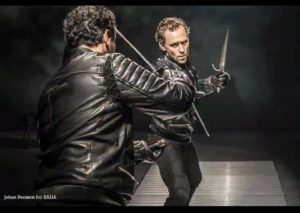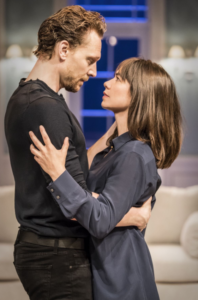
Hamlet
Jerwood Vanbrugh Theatre, RADA
September 1st to 23rd of 2017
In September 2017, Kenneth Branagh’s Olivier Award-winning theatre company joined forces with RADA for a co-production of William Shakespeare's Hamlet. The production was staged wholly to raise funds benefiting the RADA Attenborough Campaign. This campaign aims to transform RADA’s Chenies Street campus. The refurbished buildings will include RADA’s first-ever on-site accommodations, an enhanced library and archive, digitization of the current collections, and a new 250-seat theatre.
Rada Hamlet 2017 Review
(This review will focus primarily on Tom)
Tom was Hamlet.
He has this amazing ability to become the character he’s portraying. Sitting in front of him, within arms’ reach, I believed every moment of his journey. He was passionate, raging, crying, wailing, sarcastic, and funny. There was an exuberance of energy that captivated every moment and drew me into his world. I flinched at his outbursts of anger, feeling every bit the lamb facing a lion. I had to control my motherly instinct to run on stage to wrap my arms around him in comfort when he was so very despondent. I laughed and I cried, keenly emotionally involved in his portrayal of the doomed Danish prince. His whole body, every move of his head, every step, every sigh, and each finger twitch… all were perfectly timed. He was no longer Hank, Loki, Conrad, or Pine; he was Hamlet.
He wore his own clothing, or what appeared to be his own. There were no ruffs, doublets, jerkins, trunks, nor hose; the clothes were everyday modern – t-shirt, hoodie, tight jeans, and boots. His hair had regained some of its curl, and he allowed his beard to grow out, though not so much as to obscure the ticking of that little muscle at the back of his jaw. However, beyond the fact that a star I greatly admire was on stage in front of me, Tom makes Shakespeare seem effortless. He has a masterful grasp of the language and nuances. He delivers lines with fluidity, imbuing them with emotion to reveal their obscure meanings. His diction, timing, punctuation… Tom understands Shakespeare in ways I can only dream of.
The production team made good use of the small space. From the sets and staging, to the sound effects and lighting, it all came together to make a cohesive whole. It felt very intimate, exclusive, like it was a performance just for the select few present. I heard several people exclaim they had the best seats in the house, although I’m certain I did. The majority of the play, I felt that Tom was performing for me alone. It didn’t hurt that he was wriggling his bum around directly in front of me, so close he could have sat down on my lap. Not that he was there the whole play. Tom covered every inch of the stage, running, leaping, falling down, crashing about, sliding across the floor, laying down, and kneeling. He was jumping on tables, crawling under the carpet, wildly beating a sofa and cushions, hoisting the others over his shoulders, twirling them about, and tossing them onto the abused couch.
Hamlet is a tragedy, dripping with betrayal. That everybody dies is nothing new. However, in this production, many scenes were laugh-out-loud funny to counter the overall darkness of the story. Some scenes were punctuated with modern pop music and dancing, including his “snake-hips”. Many scenes were abbreviated and the lines updated to a more modern vernacular. Also, the typical “male” roles, Horatio, Rosencrantz, and Guildenstern, were portrayed by women in this production.
The play opens with Tom playing the piano and singing, “And Will He Not Come Again?” The room is dark except for a single spotlight shining down on him. His eyes are red-rimmed and tear-filled. His voice cracks under the weight of his sorrow. His grief and rage filled the available space, and was present throughout the night. His was a soul in turmoil.
At no point would I say he went truly ‘mad.’ We see again and again how betrayal whips at him, not only from his mother, but from Ophelia, and also his friends. The only one who doesn’t is Horatia. She is his best friend and will stand by him through thick and thin. There was an underlying current of sexual tension between the two, as if they could become lovers. For once, the relationship between Hamlet and Horatio didn’t seem false. However, in his throes of grief, vengeance, anger, and self-loathing, Horatia’s steadfast loyalty to Hamlet is not enough.
There’s an old saying, “laugh so you don’t cry.” The humor used masked the turmoil Hamlet was going through. It gave a release to the tension. For example, Tom’s portrayal of Hamlet mocking Polonius was hilarious. Tom skulked around behind the set; you could see him through the set windows. He looked like a sullen teen with his face painted black and white, had the hood up on his hoodie, and had a Danish flag wrapped around his shoulders. He entered the stage and slumped on the sofa, already occupied by Polonius, with a book called “Reasons to Stay Alive” (Matt Haig 2015).
Act 2, scene 2:
Polonius: “What are you reading?”
Hamlet looks at Polonius as if to say ‘you idiot’: “Words.”
Hamlet carries on with reading. He notices Polonius still waiting for an answer. He lifts the book up closer to Polonius: “Words”
Polonius stares at Hamlet. Hamlet jumps from where he’s sitting to the other end next to Polonius. He lifts up the book and stabs it with his finger a few times. “Words,” and rolls his eyes like a sarcastic teenage prat.
From there, they went into a synchronized miming routine, reminiscent of Chaplin.
The deceitful Rosacrantz and Guildastern danced with Hamlet to Kendrick Lamar’s “I”. Fists pumped in the air, hips swirled and thrust, and the couch was surely satisfied by Hamlet’s efforts to impregnate it, much to the delight of the audience. Despite the levity of it, Hamlet showed absolutely no remorse at their demise.
The grave digging scene was also quite humorous. It started with the Gravedigger drumming on four skulls with arm bones, and using skeletal finger bones for legs, walked one around the grave. Hamlet picked up Yorick’s skull and launched into dialogue using a thick, Scottish accent. The skull didn’t have a jawbone, but Tom moved it up and down in a nodding motion that made it seem like the skull was talking. He jested with Horatia about bringing Yorick back to life, and treated us with his trademark “ehehehe.”
The duel was so realistic. Tom fairly flew across the stage in rapid thrusts, lunges, parries, and dodges. Despite the themes of suicide, death, and mortality present in the play, Tom’s expressions of shock and fear when Hamlet realizes he’s going to die, truly convey the moment when death comes for him. I could hear people in the audience weeping.
When they carried Hamlet at the end of the play, it was done exactly as it was in Branagh’s movie, Hamlet. Horatia again proves herself unwavering to Hamlet, as she does not wish to let go of his hand. It was utterly heartbreaking.
When the whole cast came out to take their bows, the whole audience was on its feet. Tom returned to the stage alone, to more applause and cheers. Finally, they came out a third time, this time with the whole of the production, including set movers. I have never heard applause go on for so long.
The Cast
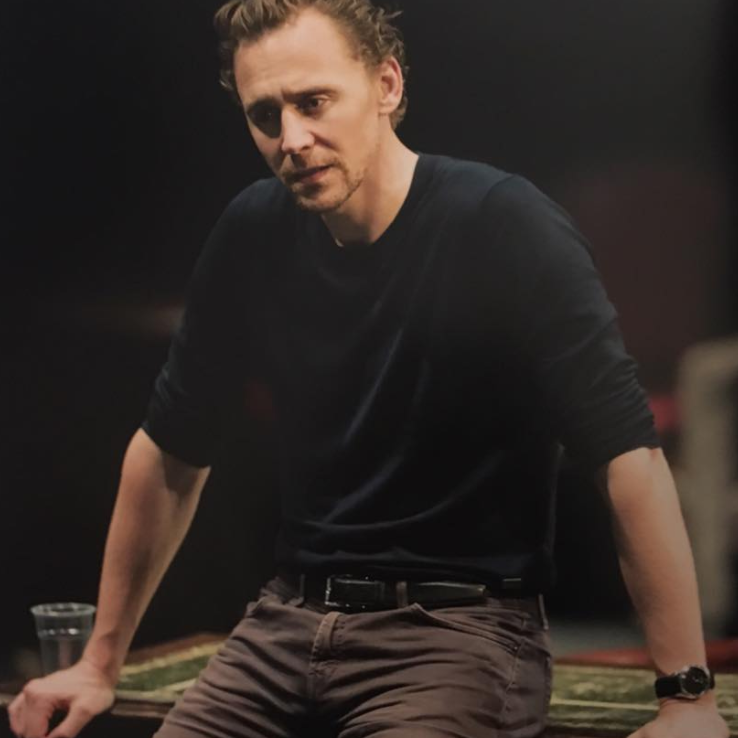
Tom Hiddleston
Hamlet

Ayesha Antoine
Rosacrantz / Bernarda

Lolita Chakrabarti
Queen Gertrude

Nicholas Farrell
King Claudius

Sean Foley
Polonius / Osric

Eleanor De Rohan
Guildastern / Marcella / Priest

Kathryn Wilder
Ophelia

Irfan Shamji
Laertes / Player Queen

Ansu Kabia
King Hamlet / Player King / Gravedigger

Caroline Martin
Horatia
